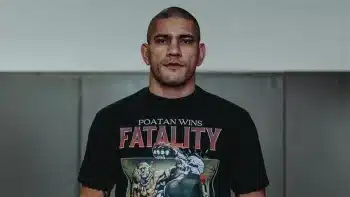NBA
NBA All-Star Voting: How Does a Player Get Chosen for the All-Star Game?

Fan voting for the NBA All-Star Game continues through Jan. 22. For more than 30 years, fans solely determined starters in the annual exhibition game. The process of choosing NBA players for the game has changed a few times since the first NBA All-Star Game in 1951. Today, multiple voting tallies account for the selection process.
Fans got the vote for the first time for the 1975 NBA All-Star Game, and that process continued through 2016. The fan’s voice still weighs heavily on the process, but other influences have entered the mix.
In the early days of the NBA All-Star Game, the media picked the starters
From 1951–74, a panel of sportswriters and broadcasters chose the starters for the East and West and selected three reserves for each side. The coaches determined the rest of the roster, 10 players until it grew to 12 in 1961.
But for the 1975 NBA All-Star Game, fan voting became the standard for naming the starters. The coaches chose reserves in each conference.
The top vote-getter in 1975 was Buffalo Braves center Bob McAdoo, who tallied 98,325 votes. New York Knicks guard Walt Frazier drew 91,621 ballots. Milwaukee Bucks center Kareem Abdul-Jabbar got the most votes among Western Conference players with 77,832.
Until the 2013 NBA All-Star Game, voters selected two guards, two forwards, and a center. That year, voting adjusted to account for the small-ball trend in the game. Three frontcourt players and two backcourt players won starting spots in the East and West.
The current voting system, implemented in 2017, includes three votes.
Fans, players, and media choose the starters in a weighted NBA All-Star vote

Today, fan voting begins on Christmas Day and continues to the fourth Saturday in January. Fans make up 50% of the selection process.
Voting by NBA players counts 25%, as does a vote of NBA media members.
According to NBA.com, the selection takes place after votes are counted. Players are ranked in each conference by frontcourt and backcourt within the three voting groups. Each player receives a score based on the weighted rank from fans, players, and media. In the case of a tie, fan voting takes precedence.
There was a tie in the 2021 voting. In the Western Conference backcourt race, Dallas Mavericks standout Luka Dončić was second in the fan voting and third among both players and media. Damian Lillard of the Portland Trail Blazers was third, second, and second.
Because of the weighting system, each player finished with 2.5 points. Dončić got the starting nod with more fan ballots cast for him.
Results still break down by conference. But the NBA abandoned the East vs. West All-Star Game format in 2018.
Instead, the leader in the fan voting from each conference is a team captain. The captains choose the other four starters from the winners of the vote. Selection of reserves follows.
Since the format change, LeBron James leads with four straight years as a captain. Giannis Antetokounmpo has two, with Stephen Curry and Kevin Durant also serving.
Injuries almost always change the final rosters
The All-Star selection process seldom ends with the selection of starters and reserves. The teams last played as selected in 2005. Every year since at least one player missed the game because of injury.
In that case, commissioner Adam Silver names a replacement from the same conference as the injured player.
Last year, Anthony Davis and Durant missed the game due to injury. Devin Booker and Domantas Sabonis replaced them. However, Booker got hurt. Mike Conley was the injury replacement for the injury replacement. As it turned out, rosters for the game were just 11 players; Ben Simmons and Joel Embiid ended up in health and safety protocols.
The NBA set rosters at 12 players for the 1974 NBA All-Star Game. An old rule requiring every team to have a representative necessitated larger rosters with expansion. After three years of 14-man teams, the NBA abolished the participation requirement.
In 1973, John Block represented the Philadelphia 76ers, his lone career All-Star appearance. At the time, the 76ers were 4–47 and would set an NBA record for futility with 73 losses. Other one-time All-Stars in the expansion years included Bob Boozer, Walt Hazzard, Jon McGlocklin, Flynn Robinson, Bob Rule, and Butch Beard.
Regardless of who ends up in Cleveland on Feb. 20, there will be controversy. There always is. But that’s part of the fun of the process, particularly in the social media era. Who doesn’t like an argument?
Statistics courtesy of Basketball Reference.
Like Sportscasting on Facebook. Follow us on Twitter @sportscasting19.
RELATED: Where and When Does the 2022 NBA All-Star Game Take Place?











